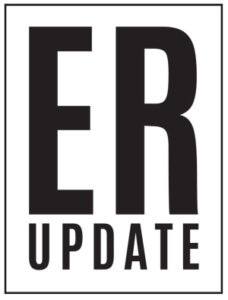Further to earlier editions of QHA Update and the QHA ER Bulletin, the new employment date for eligibility for the current JobKeeper scheme from the JobKeeper fortnight commencing 3 August 2020 is 1 July 2020. The does not affect existing eligible employees but may result in newly eligible employees.
To view earlier editions of the QHA Update and QHA ER Bulletin that explained this change, click on the below links:
- August 19 ER Bulletin - click HERE
(this contains information about the alteration of the employee eligibility date during the current JobKeeper scheme, from the JobKeeper fortnight commencing 3 August 2020). - August 12 QHA Update - click HERE
(this contains information about the 7 August Government announcement regarding the 1 July eligibility date).
Some recurring questions we have received in relation to this change are addressed below:
One-In All-In still applies
Existing eligible employees are not affected, and the one-in all-in rule still applies. This means that any employees that are newly eligible because of the change in employment date for eligibility must be provided with the nomination form and if the employee agrees to be nominated, must be paid the correct JobKeeper payment of $1500 per JobKeeper fortnight. A newly eligible employee cannot be excluded.
Employee renominating with another employer
If an employee was previously an eligible employee with another employer, and that employment has ceased before 1 July 2020, and the employee is an eligible employer with their current employer using the 1 July 2020 employment date, that employee can nominate with the new employer provided they meet the eligibility criteria.
Reemploying a former employee
If an employee was employed at 1 July 2020 and employment has since ceased, the employee can be hired and be eligible if the employer is nominated by the employee. An employee that was not previously eligible (did not meet the 1 March 2020 test) must be given a copy of the new nomination form.
An employee who was an eligible employee (did meet the 1 March 2020 test) and whose employment ceased after 1 July 2020 can be re-hired and can be eligible again, provided that the employee has not nominated another employer.
You can also claim the JobKeeper payment for an employee that left your employment before 1 July 2020 and has been re-hired if the below applies.
-
- they were an eligible employee using the 1 March 2020 test
- they stopped being employed by an employer on or before 1 July 2020
- they were re-engaged by an employer after 1 July 2020
- the employee has not at any point given an employee nomination notice nominating another employer.
In this case an employer must ask the employee to (within 7 days of re-employment) complete a notice stating whether or not they have given an employee nomination notice to another entity.
Other employment
If an employee has more than one Job and is an eligible employee (the employee has agreed to be nominated, the employer is an eligible employer and the employee meets the eligibility test) with an employer, an employee cannot agree to be nominated by another employer.
If an employee is not an existing eligible employee and has more than one than casual job for which the employee will now be eligible, the employee can choose which employer to nominate for.
If a casual employee is a newly eligible employee but has a permanent role, the employee must nominate that permanent employer. If the employee is not eligible with the permanent employer, the casual employee cannot nominate their casual employer.
Casual Employment
Casual employees are only eligible if they have 12 months of regular and systematic employment during the 12 month period that ended 1 July. If a casual employee did not meet that criteria using the previous 1 March 2020 test date, that casual employee might now satisfy the eligibility criteria using the 1 July 2020 test date.
This could include casual employees that were stood down or unable to be offered shifts for a period of time as a result of the COVID-19 restrictions. Employers should make an assessment on a case by case basis of the reason for any absence during COVID-19 and whether an employee have been likely to work during this period.

